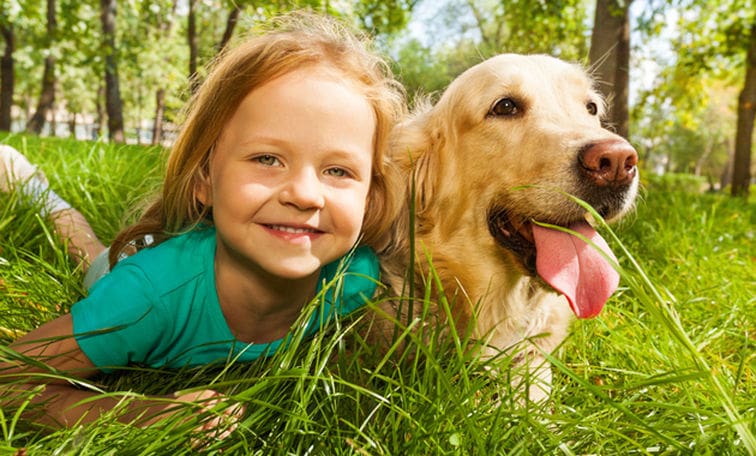
Few things can bring a child more joy than having a four-legged friend. Not only is a pet an endless source of fun, companionship and entertainment for your family, but working with a pet can also teach your child important skills, such as nurturing and cooperation. While the benefits of having a furry family member are numerous, it is important for you to keep in mind some basic safety practices so that your child (and the rest of the family) can enjoy a healthy relationship with your pet.
The Golden Rule for Pet Safety
The most important pet safety rule you must practice is this: Never, under any circumstances, leave a young child (especially age 5 or under) alone or unsupervised with an animal, even for a brief period of time. Even if a pet is considered to be trustworthy, it’s simply too much of a risk, because as you know, both pets and young children can still be quite unpredictable!
In addition, it’s very important for you to work with your child to help him/her learn how to properly interact with pets, so that situations like scratches, bites or other injuries can be kept to a minimum. Here are some handy tips you can teach your little one to ensure a greater level of pet safety:
1. Pet animals gently, with no tugging, pulling or excessive squeezing. In addition, be sure not to pet a dog or cat from behind, as this may startle the pet and produce an unpleasant or even aggressive reaction.
2. Be sure to check with the owner and get permission before you pet an animal. This is an important protocol for your child to learn for a couple of good reasons: First, not every owner wants strangers to pet their animal, and secondly, you have to allow the owner an opportunity to tell you about the temperament of their pet so that you won’t run into any unpleasant surprises.
3. Always allow a dog an opportunity to sniff your hand before you start trying to pet it. Gently extend one of your fists for the dog to sniff, so that it can get familiar with your scent first.
4. When giving treats to a dog, make sure to keep your hand flat, palm side up, and fingers held together. It’s all too easy for a dog to mistake one or two of your child’s fingers as part of the treat, especially when they’re really hungry and excited!
5. Locking eyes with a dog or a cat is never a good idea. Keep in mind that animals depend heavily upon instinct, and there’s something about an eye-to-eye stare that sends a threatening or confrontational message to dogs and cats. They might interpret your child’s stare as an act of aggression, which could cause them to instinctively lash out in self-defense.
6. When approaching an animal, don’t make any sudden moves or loud noises.
7. When petting or handling an animal, do not touch its eyes, nose, ears, mouth, or genital area.
8. It’s better to leave your pet alone when it is chewing on a toy, eating, sleeping, or caring for its young. Animals can be very territorial during these times, so it’s best to give them their space.
9. Avoid making any contact with an animal’s waste, which harbors all kinds of germs and bacteria. Make sure to keep an eye on your cat’s litterbox, because it can look like a fun sandbox to a small child!
Seeing your child interact with animals is one of life’s true joys. Be sure to keep the above tips in mind to ensure that your little one will experience a safe, fun and happy relationship with all of their four-legged friends!

